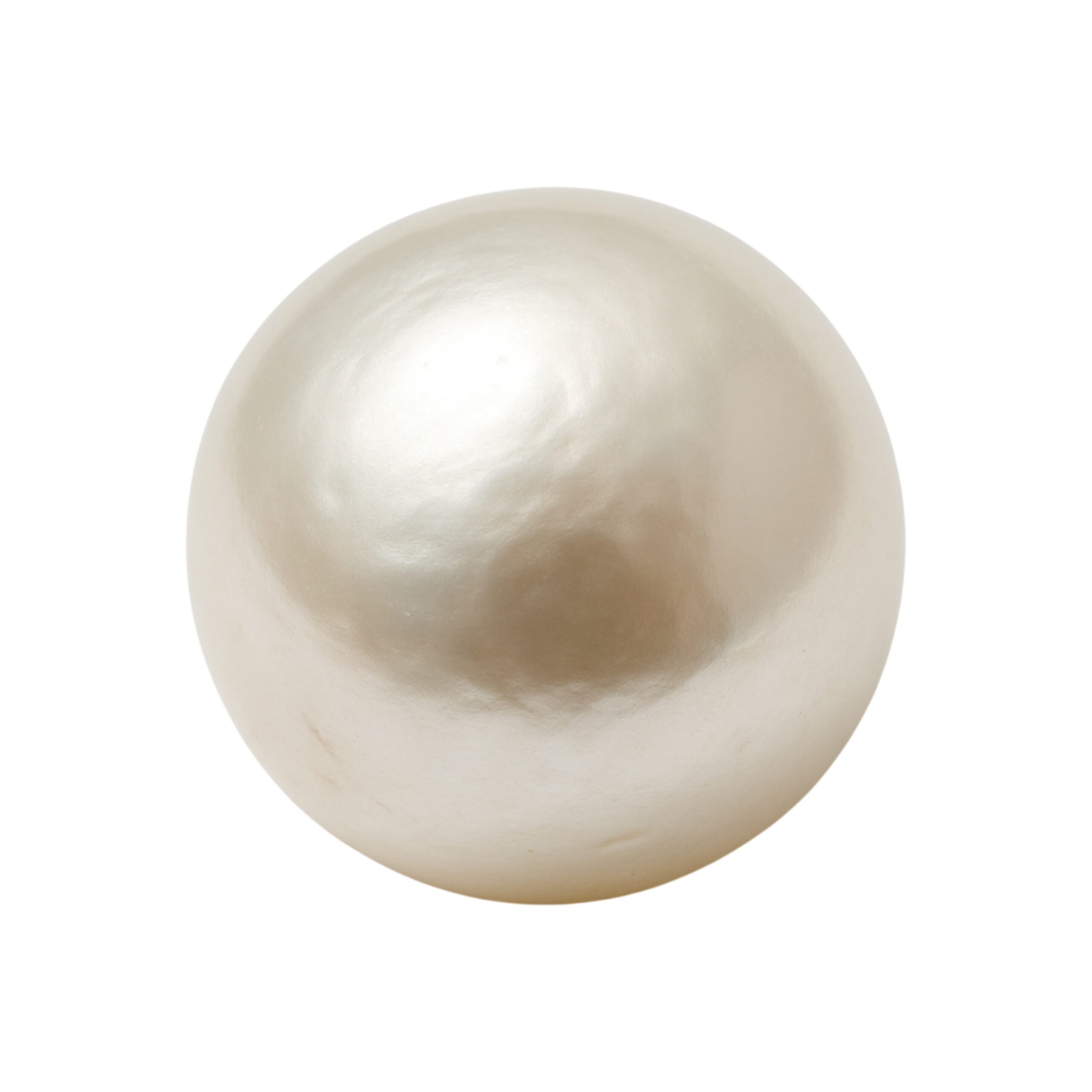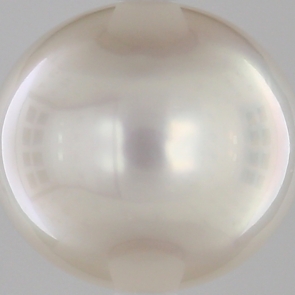
In Astrology, Pearl gemstone is associated with the Moon. It is believed to bring emotional balance, purity, and calmness to the wearer. Pearls are thought to enhance intuition, soothe stress, and promote harmony in relationships. They are also considered auspicious for fostering inner peace, grace, and a sense of serenity.
In Vedic astrology, Pearls are associated with the Moon, so individuals who have a weak or afflicted Moon in their birth chart may benefit from wearing Pearls. The Moon represents emotions, mental stability, and nurturing qualities, so wearing a Pearl can help to strengthen these areas for those who need support in them. Additionally, individuals born under the sign of Cancer, which is ruled by the Moon, may also benefit from wearing pearls as it can enhance their natural traits and mitigate any imbalances.
In Astrology, Pearl gemstones are believed to have specific benefits and are recommended for individuals based on their zodiac signs, planetary influences, or personal astrological charts. Generally, Pearl is associated with the Moon and is thought to bring emotional balance, calmness, and mental clarity.
Who Should Wear Pearl Gemstone?
- Moon-ruled individuals: People whose Moon sign (Rashi) or Nakshatra is influenced by the Moon may benefit from wearing Pearls.
- Cancers and Kumbha Rashi (Aquarius): As these signs are ruled by the Moon, Pearls can enhance emotional stability and mental peace.
- Individuals with weak Moon in their horoscope: Pearl may strengthen the Moon’s influence, improving confidence, relationships, and intuition.
- People facing emotional instability or mental stress: Pearl is believed to calm emotional turbulence.
- Women experiencing hormonal imbalances or emotional turmoil: Pearl is said to balance hormonal issues and promote calmness.
- Always consult an experienced astrologer or gemologist before wearing a Pearl, as the suitability depends on individual charts.
- Wearing the wrong gemstone without proper guidance can have adverse effects.
Pearl gemstones have been cherished for their beauty and mystical properties for centuries. Here are some of the benefits associated with wearing Pearl gemstones:
- Calming Influence: Pearls are believed to have a soothing and calming effect on the wearer. They are said to promote tranquility and help alleviate stress, anxiety, and feelings of unease.
- Emotional Balance: Pearls are associated with emotional healing and can help balance emotions. They are believed to foster feelings of love, compassion, and understanding, promoting harmony in relationships.
- Fertility and Nurturing: Pearls have long been associated with fertility and motherhood. They are believed to enhance fertility and promote a healthy pregnancy. Additionally, wearing Pearls is said to foster nurturing qualities in individuals.
- Spiritual Connection: Pearls are often considered to have strong spiritual properties. They are associated with purity, innocence, and wisdom, and wearing Pearls can help enhance spiritual awareness and intuition.
- Protection: In some cultures, Pearls are believed to offer protection to the wearer, both physically and spiritually. They are thought to ward off negative energies and evil spirits while promoting positive energy flow.
- Healing Properties: Pearls are believed to have healing properties, particularly in relation to the digestive and immune systems. They are also thought to aid in detoxification and promote overall well-being.
- Enhanced Beauty: Pearls are renowned for their natural beauty and luster. Wearing Pearl jewelry can enhance one’s appearance and add a touch of elegance and sophistication to any outfit.
It’s important to note that the perceived benefits of wearing Pearls vary across different cultures and belief systems. While many people find wearing Pearls to be spiritually and emotionally uplifting, others may simply appreciate them for their aesthetic appeal. Ultimately, whether or not one experiences the benefits of wearing Pearls is a deeply personal experience.
The quality of a Pearl gemstone is assessed based on several factors:
- Luster: Luster refers to the shine or glow on the surface of the Pearl. High-quality Pearls have a bright, reflective luster that is often described as being “mirror-like” or “deep.” The luster is a key indicator of a Pearl’s beauty and value.
- Surface: The surface of a Pearl should ideally be smooth and free from blemishes or imperfections. While minor surface irregularities are common and may not significantly affect the Pearl’s beauty, excessive flaws can detract from its overall quality.
- Size: Pearl size is an important factor in determining its value. Larger Pearls are generally rarer and more valuable than smaller ones. The size of a Pearl is typically measured in millimeters and can vary widely depending on the type of Pearl and the specific cultivation conditions.
- Shape: Pearls come in various shapes, including round, near-round, oval, button, drop, and baroque. Round Pearls are considered the most valuable and desirable, with perfectly spherical Pearls commanding the highest prices. However, Pearls of other shapes can also be highly prized depending on their uniqueness and symmetry.
- Color: Pearls occur in a wide range of colors, including white, cream, pink, peach, silver, gold, black, and more. The color of a Pearl is influenced by factors such as the type of mollusk that produced it, the water quality, and any treatments or enhancements it may have undergone. While personal preference plays a significant role in determining the most desirable color, Pearls with intense, evenly distributed hues are generally considered more valuable.
- Nacre Thickness: Nacre is the iridescent substance secreted by the mollusk to form the Pearl. Pearls with thick, lustrous nacre layers are generally considered higher quality because they are more durable and less prone to damage or deterioration over time.
- Origin: The origin of a Pearl can also affect its quality and value. Pearls from certain regions, such as the South Sea, Tahiti, and Japan, are known for their exceptional quality and rarity, commanding premium prices in the market.When evaluating the quality of a Pearl gemstone, it’s essential to consider these factors collectively to determine its overall value and desirability.The price of Pearl gemstones can vary widely depending on several factors, including:
- Type of Pearl: Different types of Pearls command different prices. For example, natural Pearls, which form spontaneously in mollusks without human intervention, are exceedingly rare and can be extremely expensive. Cultured Pearls, which are grown with human assistance by implanting a nucleus into the mollusk, are more common and generally more affordable.
- Origin: The origin of the Pearl can significantly influence its price. Pearls from certain regions, such as the South Sea, Tahiti, and Japan, are known for their exceptional quality and rarity, commanding premium prices in the market.
- Size: Pearl size is another important determinant of price. Larger Pearls are generally rarer and more valuable than smaller ones, so their prices tend to be higher.
- Shape: Round Pearls are considered the most valuable and desirable, with perfectly spherical Pearls commanding the highest prices. However, Pearls of other shapes can also be highly prized depending on their uniqueness and symmetry.
- Color: The color of the Pearl can also affect its price. Pearls with rare and intense hues, such as natural pink or blue pearls, can command higher prices than more common colors like white or cream.
- Luster and Surface Quality: Pearls with high luster and smooth, blemish-free surfaces are considered more valuable than those with lower luster and surface imperfections.
- Market Demand: Market demand and trends can also influence the price of Pearl gemstones. Certain types of Pearls may experience fluctuations in price based on factors such as fashion trends, cultural preferences, and economic conditions.
As a result of these factors, the price of Pearl gemstones can range from relatively affordable to exceedingly expensive, with some rare and exceptional Pearls fetching prices in the tens or even hundreds of thousands of dollars per Pearl. It’s essential to carefully consider the quality, characteristics, and market factors when evaluating the price of a Pearl gemstone.
Here are the key jewelry details for Pearl gemstones:
Jewelry Types Featuring Pearl
- Necklaces: Classic Pearl strand necklaces, often used for formal occasions.
- Earrings: Pearl studs, drop earrings, or hoops with pearl accents.
- Bracelets: Pearl bangles or beaded bracelets.
- Rings: Pearl solitaire rings or mixed-metal designs with Pearl accents.
- Brooches & Pins: Decorative Pearl embellishments.
Types of Pearls Used in Jewelry
- Natural Pearls: Rare and valuable, formed naturally in mollusks.
- Cultured Pearls: Farmed Pearls, more common and affordable.
- Freshwater Pearls: Typically smaller and less expensive.
- Saltwater Pearls: Tahitian, Akoya, South Sea Pearls—larger and prized for their luster.
Pearl Jewelry Specifications
- Shape: Round, semi-round, irregular, button, drop.
- Luster: Should be high; Pearls with a brilliant shine are more valuable.
- Color: White, cream, pink, black, gold, and other shades depending on the type.
- Surface Quality: Ideally smooth with minimal blemishes.
- Size: Ranges from 2 mm to over 16 mm; larger Pearls generally more expensive.
Design & Settings
- Pearls are often set in gold, silver, or platinum.
- Classic settings include prong, bezel, or Pearl pendants.
Pearl is a beautiful and relatively durable gemstone, but like all gemstones, it requires proper care to maintain its luster and prevent damage. Here’s how to clean and care for your Pearl:
Cleaning
- Gentle wiping: After wearing, wipe Pearls with a soft, lint-free cloth to remove oils, sweat, and residue.
- Mild soap solution: Occasionally, clean Pearls with a mixture of lukewarm water and mild soap. Use a soft cloth or a very soft brush, and then rinse with clean water.
- Avoid chemicals: Keep Pearls away from harsh chemicals like perfumes, hairspray, and cleaning agents, which can damage their surface.
- No ultrasonic cleaners: Do not use ultrasonic or steam cleaners as they can damage the Pearls.
Care
- Storage: Store Pearls separately in a soft cloth pouch or a lined jewelry box to prevent scratching.
- Limit exposure: Avoid exposing Pearls to direct sunlight, heat, or contact with cosmetics and acids.
- Wear regularly: Wearing Pearls often helps maintain their luster, as the natural oils from your skin keep them moisturized.
- Restringing: If you have Pearl necklaces, have them restrung every few years to prevent breaking and to remove dirt buildup.
Additional Tips
- Put on Pearl jewelry last when dressing up to minimize contact with cosmetics.
- Remove Pearls before swimming, bathing, or exercise to avoid exposure to chlorine or sweat.
- Treatments and Enhancements: Many Pearls are dyed, bleached, or have surface treatments. Always ask for disclosure and certification to verify natural or treated status.
- Imitations and Synthetics: Be cautious of fake Pearls made from plastic or glass. Genuine Pearls have a unique luster and feel that imitation Pearls cannot replicate.
- Overpriced or Fake Grading: Some sellers may overstate the quality of the Pearl’s luster, surface, shape, or size. Insist on reputable grading reports from trusted labs.
- Misleading Sizes: Larger Pearls are often more expensive, but size alone does not determine quality. Check for surface quality and luster.
- Low-Quality Pearls: Look out for Pearls with visible blemishes, dullness, or irregular shapes, which may indicate lower quality or fake Pearls.
- Lack of Certification: Always buy from reputable sources that provide certification or appraisal reports verifying authenticity and quality.
- Beware of “Too Good to Be True” Deals: Extremely low prices may indicate imitation or heavily treated Pearls. Quality Pearls typically fetch a higher price.
- Return and Guarantee Policies: Ensure the seller offers a clear return policy and guarantee authenticity.
Always buy from reputable jewelers or certified gemologists to avoid counterfeit or misrepresented Pearls.
Featured Products

 Cart is empty
Cart is empty 